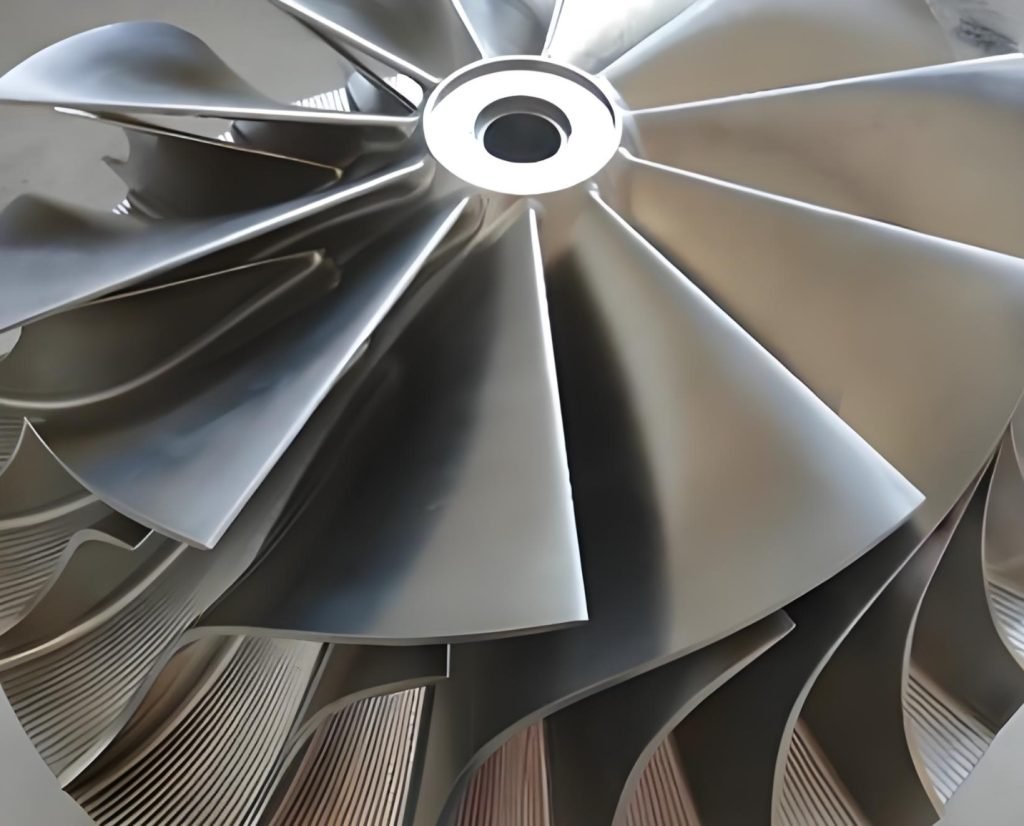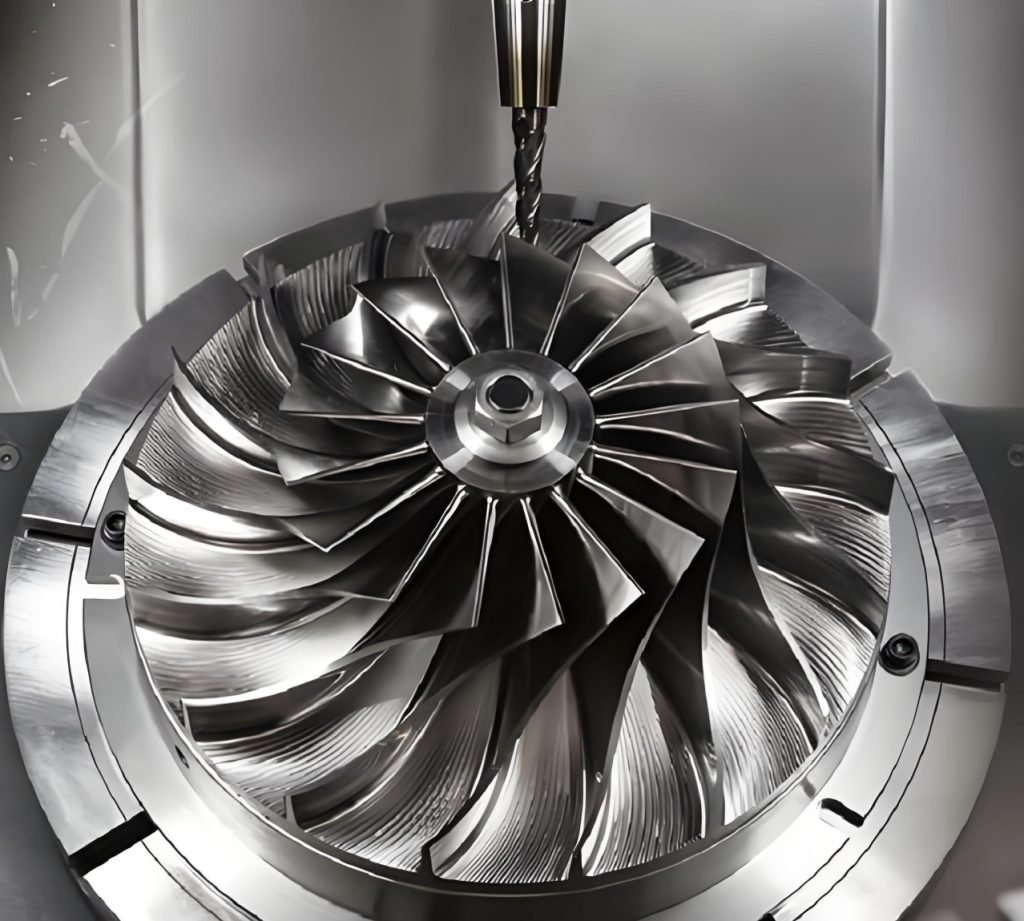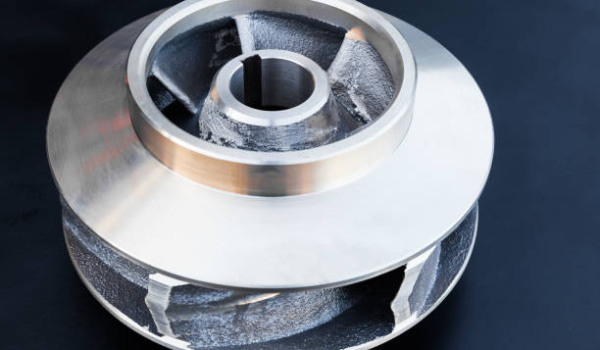Impeller pumps are the lifeblood of modern fluid management. They power everything from agricultural irrigation to complex manufacturing processes. An impeller pump’s main component is a rotating blade that creates centrifugal force and increases fluid pressure and flow inside a pump casing.
The motor generates mechanical energy that these versatile devices convert into kinetic energy. They can handle all types of fluids. You’ll find them keeping operations running smoothly in wastewater management, chemical processing, HVAC systems and marine applications. This article explores impeller pumps’ workings, types, and applications in industries of all sizes. You will learn how they work and which Impeller on a Pump is right for you.
What Is an Impeller and Its Role in a Pump
The impeller is the heart of any pump system. It converts the motor’s mechanical energy into kinetic energy that moves fluids. This rotating part sits at the center of the pump system and pushes fluid out from the core to create the force needed for fluid movement.
How do impellers create centrifugal force to move fluids? The motor turns the impeller through the shaft to start the pumping process. The spinning impeller creates a vacuum at its center, pulling fluid into the impeller’s eye. The rotation then creates a centrifugal force that pushes the fluid along the impeller’s vanes.
Fluid flows into the inlet where the impeller adds energy through centrifugal action. The fluid’s speed decreases as it moves from the impeller to the pump outlet which creates higher pressure. The pump casing restricts the outward movement and converts the impeller’s velocity into pressure.
Key components of an impeller (vanes, hub, shroud)
An impeller has these main parts:
- Vanes: These curved blades catch and drive fluid as they rotate. The vane’s design affects pump performance – the height controls flow generation and the outer diameter sets pressure.
- Hub: This large circular part sits behind the vanes. It provides structural support and connects every vane to the impeller assembly.
- 3. Shroud: The hub’s outer diameter has the shroud with different setups:
- Closed impellers have shrouds on both sides of the vanes
- Semi-open impellers have a single shroud on top
- Open impellers have no shrouds
The design and setup of these parts affect the impeller’s performance. Closed impellers exhibit higher efficiency because they allow fluids to flow through the passage of the vanes. The impeller needs to be sufficiently durable so as not to wear and rust. Depending on the use, the materials will be anything from cast iron and steel to stainless steel and bronze.
How Impellers Work in a Pump
Impeller pumps work by using a spinning impeller housed in a casing to create centrifugal force. As the impeller spins, it creates a low pressure area that draws fluid into the pump through the suction port. The spinning blades then accelerate the fluid, increasing its pressure and forcing it out through the discharge port.
This process can be divided into two main stages:
- Suction Stage: The spinning impeller blades create a low pressure area that draws fluid into the pump.
- Discharge Stage: The centrifugal force from the spinning impeller pushes the fluid out through the discharge port.
Also, the direction of the fluid flow distinguishes radial flow from axial flow impeller pumps. In radial flow pumps, the fluid moves perpendicular to the shaft, while in axial flow pumps, the fluid moves parallel to the shaft. Finally, the rotational speed of the impeller is crucial. Higher speeds generate more centrifugal force, more pressure, and more flow rate.

Types of Impeller Pumps
There are several types of impeller pumps each designed to handle specific fluid movement tasks. The most common types are:
Centrifugal Pumps
Centrifugal pumps are the most common type of impeller pump. They use a rotating impeller to create a fluid flow by centrifugal force. They are commonly used because they are easy to use, highly dependable and good at conveying water and lower-viscosity fluids.
Axial Flow Pumps
Axial flow pumps work on a different principle. Instead of pushing the fluid radially out, they use an impeller that pushes the fluid in a direction parallel to the pump’s shaft. They are often used in applications where a large volume of fluid needs to be moved with a relatively low pressure increase, such as in circulation systems.
Mixed-Flow Pumps
Mixed-flow pumps combine the principles of both centrifugal and axial flow pumps. They have impellers that guide the fluid in a mixed radial and axial direction. This allows them to handle applications with moderate pressure and high flow rates, making them versatile for many industrial uses.
Self-Priming Pumps
Self-priming pumps are designed to automatically remove air from the pump and suction line so the pump can start and run continuously. These pumps are useful when the pump might need to handle fluids with air pockets or in systems where priming manually would be difficult.
Impeller Applications Across Industries
Impellers are used across various industries due to their flexibility and efficiency. Here are some of the key applications:
- Water Treatment: Municipal and industrial water systems
- HVAC Systems: Cooling and heating
- Oil and Gas: Refining and fluid transportation
- Food and Beverage: Hygienic liquid processing
- Chemical/Pharmaceutical: Corrosive or high-viscosity fluids
- Marine/Automotive: Engine cooling and fuel transfer

Impeller Pump Advantages and Limitations
Like any technology, impeller pumps have their pros and cons.
Advantages
- High efficiency: The impellers utilize power effectively and hence use lower energy and lower operational expenses.
- Versatility: They will take a variety of fluids, including chemicals, water, and food-grade liquids, and thus fit a variety of applications.
- Low maintenance requirements: Impeller pumps often require lower maintenance because they contain fewer moving parts than other pump designs.
- Cost Effective: Simple design and reliable operation means lower initial cost and long term savings.
Disadvantages
- Wear and tear: The impeller’s vanes will wear a lot in wear-and-tear use and will not perform with the original efficiency.
- Sensitivity to cavitation: The collapsing and formation of the vapor bubbles in the pump and the associated impeller damage comprise cavitation. This occurs when there is low suction pressure and higher fluid temperature.
- Limited Pressure: Highly efficient at moving large volumes of fluid but not as good at generating high pressure as other pump types.
How to Select the Right Impeller Pump for Your Requirements
A good impeller pump selection depends on how well you know the operational parameters and system requirements. The right approach will give you reliable performance at a cost.
Key considerations
You need to start by showing fluid properties and what the system needs. The required flow rate will determine how much volume the pump needs to deliver in a given time. Your choice of pump will largely depend on the fluid you are working with since different viscosities and solid contents need specific impeller designs. Three key factors to consider in wastewater applications are gas content in the fluid, sand content levels, and dry solids concentration.
Material selection for different applications
Your material choice will affect the pump’s life and performance. Cast iron works with pH 5.5 to 14 as long as chloride is below 200 mg/l. Hard iron is best with abrasive particles – lasts up to five times longer than stainless steel.
Common pump materials, from least to most resistant to abrasive wear, are cast iron, manganese bronze, nickel-aluminum bronze, cast steel, 300-series stainless steel, and 400-series stainless steel.
Maintenance and operational considerations
Regular maintenance is crucial for optimal pump performance and life. Daily checks include checking pump installation, listening for unusual noises or vibrations, and monitoring bearing and motor temperatures. To prevent unexpected failures, replace worn parts every one to two years, maintain correct clearance between impeller and casing, and lubricate bearings and joints regularly.
Impeller diameter plays a big role in pump performance. A larger diameter creates more head and flow, but too much trimming reduces efficiency by increasing the gap between the impeller and casing. That’s why you should always check performance curves that show acceptable impeller trim sizes to get the best results.
Common Issues and Maintenance of Pump Impellers
Pump impellers need constant monitoring and quick action to perform at their best. Regular checks help catch problems early before they shut down your operations.
Signs of impeller wear and damage
You can spot impeller problems through these obvious signs:
- Lower pump pressure and uneven fluid flow
- Strong vibrations with weird metallic noises
- Bearings and pump casing get too hot
- Unstable readings at the pump outlet
A visual inspection usually shows erosion, corrosion damage or bent vanes. When wear is beyond 1/8-inch deep, replace impellers immediately. Hard or polished end faces and broken or missing blades indicate severe operational stress.
Causes of clogging and how to avoid it
Solid particles in the pump system cause most clogs. Debris like mineral deposits and organic matter, can block fluid flow. Stringy materials create special problems because they wrap around impeller vanes. This reduces efficiency and makes the pump work harder.
Here’s how to avoid clogs:
- Put strainers in front of the pump inlet
- Clean strainers regularly to keep suction clear
- Choose open-impeller designs when dealing with non-compressible solids
Regular maintenance practices to extend impeller life
A full maintenance program has several key steps. Regular checks and part inspections are the foundation of maintenance.
Essential maintenance tasks:
- Check impeller clearances and wear patterns annually
- Replace mechanical seals and impellers every 1-2 years
- Monitor vibration levels to catch imbalances
- Lubricate bearings and joints properly
The impeller and volute need to have the correct clearance for optimal performance. Operators can adjust this from outside. Clear suction lines and proper fluid levels prevent cavitation damage. These maintenance practices help your impellers last longer and pumps run smoother.
Conclusion
The impeller is the heart of a pump—responsible for generating flow, creating pressure, and ensuring efficient fluid movement across countless applications. Its geometry, material, and precision all directly affect pump performance, energy efficiency, and long-term durability. Whether used in industrial processing, HVAC systems, wastewater treatment, or specialized engineering systems, a well-designed and accurately manufactured impeller is essential for reliable pump operation.
At Fecision, we provide high-precision CNC machining services for custom impellers, delivering exceptional accuracy, optimized performance, and material options tailored to your operating environment. Contact us today to develop custom-machined impellers that enhance the efficiency and reliability of your pump systems.




